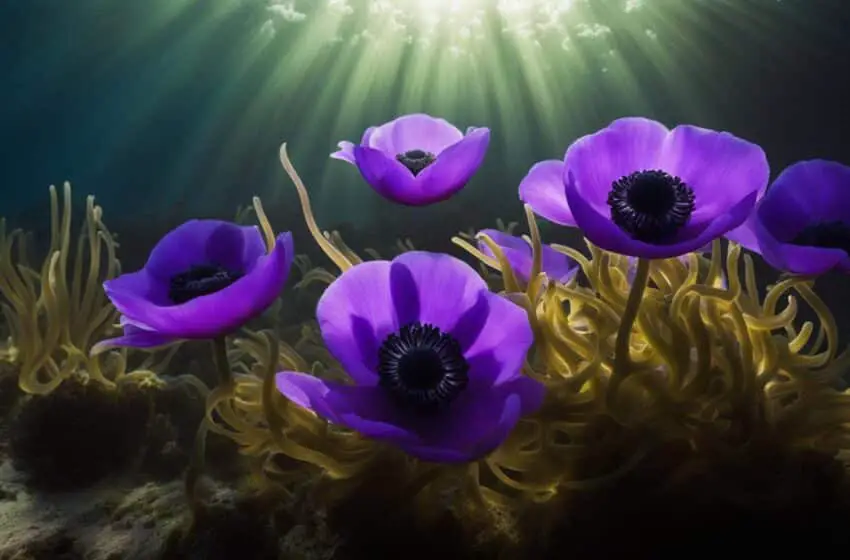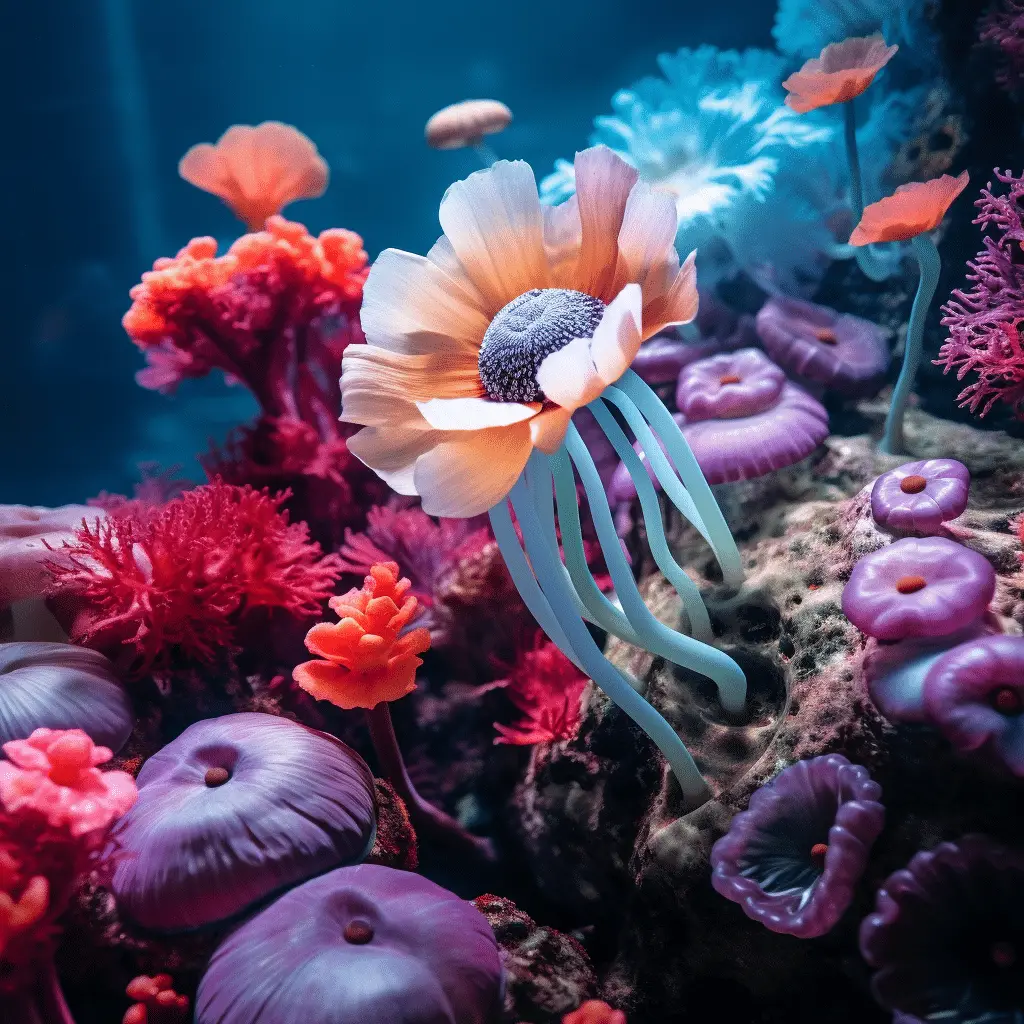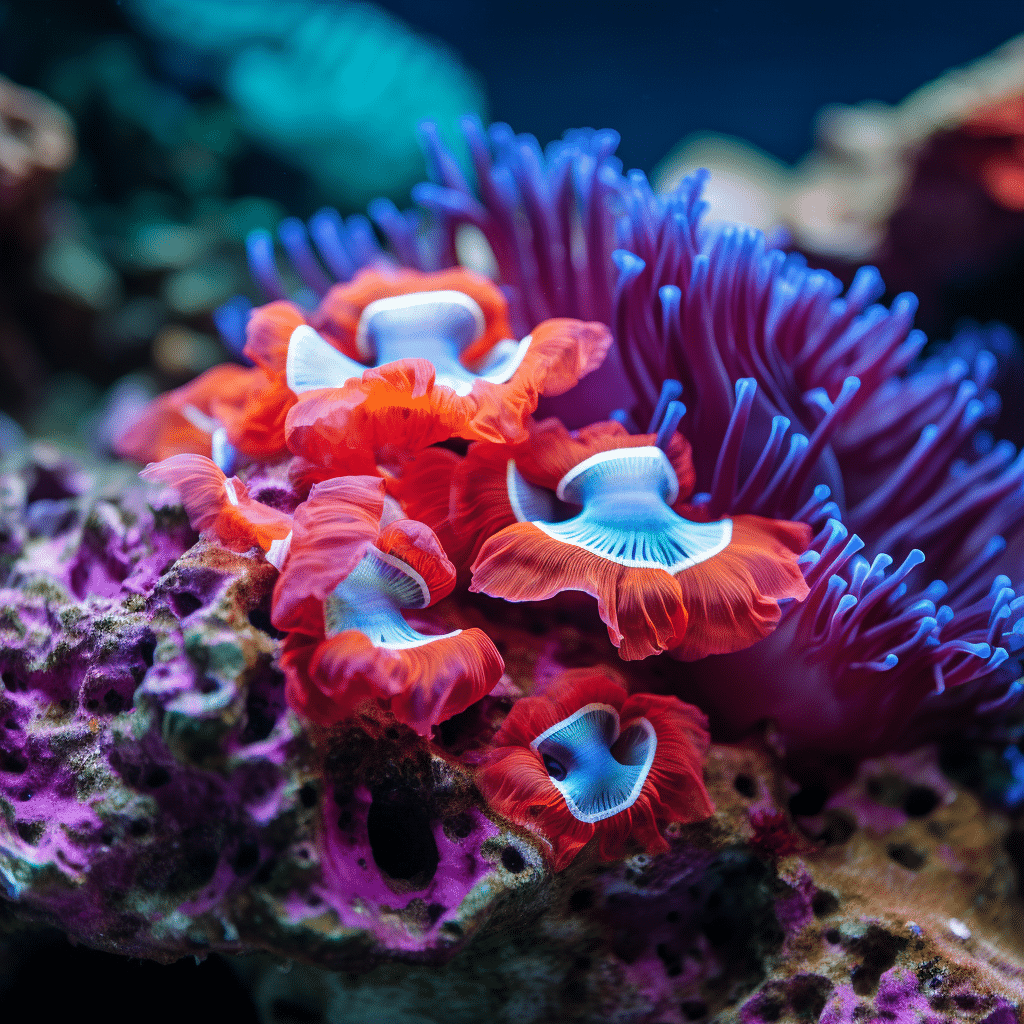Thriving with Anemones: Essential Care Tips for Beginners

Anemone Care For Beginners: Anemones can be a captivating addition to a reef aquarium, but they require specific care to thrive. To ensure success as a beginner, it’s important to choose anemones that are suited for your skill level. The best anemones for beginners are Rock Anemones and Bubble Tip Anemones. These anemones are more forgiving in terms of water parameters and lighting requirements. They also have a higher chance of hosting clownfish, which adds an extra level of beauty to your tank. When selecting anemones, it’s crucial to look for healthy specimens with closed mouths, intact feet, and vibrant colors. Aqua-cultured anemones are coral reefs recommended over wild-caught ones as they tend to be hardier and have a lower impact on the environment. With the right choice of anemone, you can create a vibrant and thriving aquatic habitat.
Key Takeaways:
- Choosing the right anemones is crucial for beginners
- Rock Anemones and Bubble Tip Anemones are ideal for newcomers
- Look for healthy specimens with closed mouths, intact feet, and vibrant colors
- Aqua-cultured anemones are recommended over wild-caught ones
- Create a vibrant and thriving aquatic habitat with the right choice of anemone
Providing the Right Conditions for Anemones

Anemones have specific requirements for lighting, flow, and water parameters that are crucial for their health and well-being. By ensuring that these conditions are met, you can create an optimal environment for your anemones to thrive.
Lighting
Proper lighting is essential for anemones as they rely on photosynthesis to produce energy. Different species of anemones have varying lighting requirements. For light-loving anemones like Heteractis Magnifica, Metal Halide lighting is preferred as it provides the intensity and spectrum needed for their growth and coloration. Anemone Care For Beginners On the other hand, Bubble Tip Anemones can do well under strong T5 lighting. It is important to monitor the lighting levels as anemones may exhibit color changes under bright lighting, which can be an indication of zooxanthellae production. Optimal lighting will help prevent bleaching and ensure the health of your anemone.
Flow
Anemones require moderate to brisk water flow to simulate their natural habitat and aid in their feeding and waste removal. Gentle water movement can be achieved with the use of powerheads or wavemakers, but it is important to avoid placing them too close to the anemone. Anemones can move around the tank, and a strong current from powerheads can harm them. It is recommended to create a carefully designed flow pattern that allows for efficient water circulation without putting your anemone at risk.
Water Parameters
Maintaining optimal water parameters is crucial for the health and well-being of your anemones. Key parameters to monitor and regulate include salinity, trace elements, and temperature. Anemones thrive in stable water conditions, so it is important to regularly test and adjust these parameters as needed. Salinity should be kept within the appropriate range for a reef tank, typically around 1.025 specific gravity. Trace elements, such as calcium and magnesium, should be maintained at optimal levels to support the growth and maintenance of anemones. Temperature should be kept within the range suitable for the specific species you are keeping. Maintaining these water parameters will help create a stable and favorable environment for your anemones.
By providing the right lighting, flow, and water parameters, you can ensure that your anemones have the best possible conditions for growth and overall health. Paying close attention to these factors will help create a thriving and visually stunning aquarium environment for both your anemones and other inhabitants.
Feeding and Clownfish Compatibility
Proper feeding is essential for the health and well-being of anemones in your reef aquarium. Anemones have varying feeding requirements, so it’s important to find the right balance between providing enough food and ensuring the water quality remains optimal. It is recommended to offer food to your anemones once a week as a general guideline. However, with adequate lighting, anemones do not need to be fed as frequently as once a day. Overfeeding can lead to water pollution and negatively impact the health of anemones. It is crucial to observe the growth of your anemone as an indicator of whether it is receiving enough food. Anemone Care For Beginners If the anemone is showing signs of stunted growth or is not expanding as it should, it may need more frequent or larger feedings.
In addition to direct feeding, clownfish can also contribute to the nutritional needs of anemones. Clownfish have a symbiotic relationship with anemones in the wild and can provide them with additional nutrients. When keeping clownfish with anemones, it’s important to ensure that the anemone is large enough to accommodate the clownfish and that the clownfish will not harass or harm the anemone. Some clownfish species have specific anemones they prefer to host, so it’s important to research their natural symbiotic relationships before introducing them to your aquarium. The presence of clownfish can also stimulate the anemone to feed more actively, as they provide food particles and help with the circulation of water around the anemone.
Photosynthesis Process

It is worth noting that anemones can also derive nutrition from the lighting and photosynthesis process. Zooxanthellae, which are photosynthetic algae living within the tissues of anemones, produce energy through photosynthesis and provide some of the nutrition needed for the anemone’s survival. Anemone Care For Beginners Proper lighting is crucial for facilitating this process and ensuring the health of both the anemone and the zooxanthellae. Maintaining the recommended lighting intensity and spectrum is important to prevent bleaching, especially for light-loving anemone species like Heteractis Magnifica. Providing suitable lighting conditions along with appropriate feeding practices can help ensure the overall well-being and longevity of your anemones in the aquarium.
Table: Recommended Feeding Guide for Anemones
| Anemone Species | Feeding Frequency | Recommended Food Types |
|---|---|---|
| Rock Anemone | Once a week | Small pieces of meaty foods, such as shrimp or fish |
| Bubble Tip Anemone | Once a week | Small pieces of meaty foods, such as shrimp or fish |
| Heteractis Magnifica | Once a week | Small pieces of meaty foods, such as shrimp or fish |
Source: My Personal Experience
Conclusion
Anemone Care For Beginners Choosing the right anemones is crucial for beginners looking to add these captivating creatures to their reef aquarium. The best anemones for beginners are Rock Anemones and Bubble Tip Anemones. These species are known for their forgiving nature and compatibility with clownfish, adding an extra level of beauty to your tank.
To ensure the health of anemones, it’s essential to provide the right conditions. This includes proper lighting, water flow, and maintaining optimal water parameters. Adequate lighting, such as Metal Halide or T5 lighting, is necessary to promote their growth and prevent bleaching. Moderate to brisk water flow helps anemones catch prey and eliminate waste, but powerheads should be avoided to prevent harm to the anemone.
Feeding anemones requires finding the right balance. While they don’t need to be fed as frequently as once a day, offering food once a week helps condition them. It’s important to observe the growth of the anemone to ensure it’s receiving enough nutrients. Additionally, when keeping clownfish with anemones, it’s crucial to ensure the anemone is large enough to accommodate the clownfish and that they have a natural symbiotic relationship.
By understanding the needs of anemones and selecting beginner-friendly species, you can create a vibrant and thriving aquatic habitat. Rock Anemones and Bubble Tip Anemones are ideal choices for newcomers. Dive into the mesmerizing world of anemones and enjoy the beauty they bring to your reef tank.
FAQ
What are the best anemones for beginners?
The best anemones for beginners are Rock Anemones and Bubble Tip Anemones.
What should I look for when selecting anemones?
Look for healthy specimens with closed mouths, intact feet, and vibrant colors.
Which lighting is best for anemones?
Metal Halide lighting is preferred, especially for light-loving anemones like Heteractis Magnifica. Bubble Tip Anemones can do well under strong T5 lighting.
How often should I feed anemones?
Anemones should be fed once a week. With adequate lighting, they do not need to be fed as frequently as once a day.
Can clownfish feed anemones?
Yes, clownfish can provide anemones with additional nutrients.
What should I consider when keeping clownfish with anemones?
Ensure that the anemone is large enough to accommodate the clownfish and that the clownfish will not harass or harm the anemone. Research the natural symbiotic relationships between clownfish and anemones to choose compatible species.



